Keywords: Athlete, Pain, Assessment
In this blog we address the clinical challenge of assessing pain in athletes. We discuss our recent publication in the BJSM which examined how pain in the upper and lower limb in athletes has been assessed over the past 50 years (1). We highlight some of the gaps in research and practice as they relate to the International Olympic Committee (IOC) Athlete pain reference standard (2).
Why is this study important?
Pain and injury are often intertwined. However, they can occur separately and the relationship between pain, injury and performance is complex, with many athletes playing through pain on a regular basis (3). Both the sensory (physical) and emotional (mental) aspects of pain can impact an athlete’s performance holding them back from achieving their potential. Pain can interfere with daily activities and when it persists can impact quality of life including sleep, mental health and cognitive performance (3, 4). A more comprehensive pain assessment may help answer the question ‘’why does it hurt?’’ and may lead to more targeted treatment and management strategies towards improved performance and wellbeing.
Recently the importance of addressing wider biopsychosocial factors has been highlighted in athletes. In 2017 the IOC developed a comprehensive athlete pain framework highlighting five domains of pain assessment tools: Neurophysiological, biomechanical, affective, cognitive and socioenvironmental (Figure 1) (2, 5).
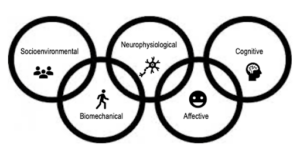
Figure 1 – The 5 International Olympic Committee (IOC) Athlete Pain framework assessment domains
We set out to investigate how pain in the upper and lower limb has been assessed in athletes.
How did the study go about this?
We conducted a scoping review to identify all relevant articles where competitive athletes of any level, with upper or lower limb pain were assessed. All 470 of the articles that were reviewed were screened independently by two or more members of the team. All relevant data relating to the athletes and the context of the pain assessment were collected.
What did the study find?
Most studies included assessment tools from the two traditional domains: neurophysiological and biomechanical. All studies included neurophysiological (location, severity, impact of pain on performance etc) and biomechanical (training load, height and weight, range of motion, strength etc) assessment tools were included in 90% of studies. In contrast to this, socioenvironmental (time of season, quality of life etc) assessment tools were included in 39% of studies, whilst affective (confidence to return to play, feelings/emotions, concerns/worries about pain etc) assessment tools were present in 22% of papers and tools from the cognitive (attention/distraction, pain beliefs, pain catastrophizing etc) pain assessment domain were found in just 13% of studies included. Looking at the total number assessment tools used in each domain (as many studies included multiple tools from the different domains), the gap between the 5 domains increased even further. Neurophysiological and biomechanical tools were used far more frequently than affective, socioenvironmental and cognitive tools which can be viewed below (Figure 2).
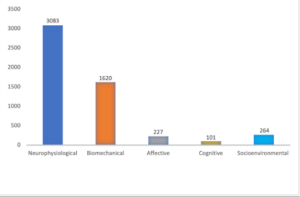
Figure 2 The total number of pain assessment tools in each domain identified across 470 papers.
A pain classification system was included in 23% of studies, with the majority using the outdated biomedical model. Over the past 5 years the use of more comprehensive affective, socioenvironmental and cognitive pain assessment tools has increased marginally (Figure 3). However, though we have seen an encouraging rise in the representation of these domains over the past 5 years, the gap between their representation and that of the traditional neurophysiological and biomechanical domains is actually widening, not getting smaller. When looking at diversity, very few studies addressed athletes with physical disabilities, and no studies included athletes with intellectual disabilities. Socioeconomic factors were highlighted in just 6.2% of papers.
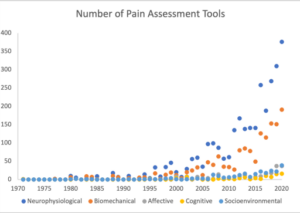
Figure 3 – Pain assessment tools in the 5 pain assessment domains from 1971-2021.
What are the key take-home points?
Pain assessment is complex and the 5 domains recommended by the IOC Athlete Pain Framework should be considered. Our paper highlights a significant gap in the use of 3 of these domains, namely; affective, socioenvironmental and cognitive.
Of the five domains neurophysiological and biomechanical tools are frequently used however reviewing the broad range of assessment tools available in each of these domains beyond those commonly used and applying them appropriately in clinical scenarios warrants consideration.
Affective, socio-environmental and cognitive tools are underrepresented in contrast to contemporary pain research and practice which highlights the importance of the patient understanding their pain and clinicians appreciating contextual factors (6, 7). Although there has been more use of the comprehensive affective, socioenvironmental and cognitive assessment tools in the past 5 years the overall gap is widening, a potential concern for research and practice.
Clinicians can use this paper to review their current practice and consider all five domains and tools available (Table 1) to ensure that an athletes pain is comprehensively assessed.
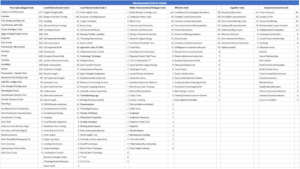
Table 1 – Pain Assessment Tools
What are the next steps?It is vital to holistically assess an athlete’s pain to identify more targeted treatment and management strategies. Our research group has been discussing the experience of pain and the assessment of pain with athletes and physiotherapists that will inform the development of a comprehensive framework for assessing upper and lower limb pain in athletes. The next step will involve an online real time Delphi consensus study with clinicians who are interested in this area. If you are interested, we would love to hear from you. Just drop a line to athlete@insight-centre.org.
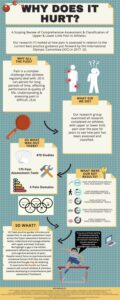
Authors:
References
-
Purcell C, Duignan C, Fullen BM, et al Comprehensive assessment and classification of upper and lower limb pain in athletes: a scoping reviewBritish Journal of Sports Medicine Published Online First: 09 February 2023. doi: 10.1136/bjsports-2022-106380
-
Hainline B, Derman W, Vernec A, et al. International Olympic Committee consensus statement on pain management in elite athletes. Br J Sports Med 2017;51(17):1245-58. doi: 10.1136/bjsports-2017-097884 [published Online First: 2017/08/23]
-
Heerey JJ, Kemp JL, Mosler AB, et al. What is the Prevalence of Hip Intra-Articular Pathologies and Osteoarthritis in Active Athletes with Hip and Groin Pain Compared with Those Without? A Systematic Review and Meta-Analysis. Sports Med 2019;49(6):951-72. doi: 10.1007/s40279-019-01092-y [published Online First: 2019/04/12]
-
Oliveira VMA, Pitangui ACR, Gomes MRA, et al. Shoulder pain in adolescent athletes: prevalence, associated factors and its influence on upper limb function. Braz J Phys Ther 2017;21(2):107-13. doi: 10.1016/j.bjpt.2017.03.005 [published Online First: 2017/05/04]
-
Hainline B, Turner JA, Caneiro JP, et al. Pain in elite athletes-neurophysiological, biomechanical and psychosocial considerations: a narrative review. Br J Sports Med 2017;51(17):1259-64. doi: 10.1136/bjsports-2017-097890 [published Online First: 2017/08/23]
-
Lewis J, O’Sullivan P. Is it time to reframe how we care for people with non-traumatic musculoskeletal pain? Br J Sports Med 2018;52(24):1543-44. doi: 10.1136/bjsports-2018-099198 [published Online First: 2018/06/27]
-
Dansie EJ, Turk DC. Assessment of patients with chronic pain. Br J Anaesth 2013;111(1):19-25. doi: 10.1093/bja/aet124 [published Online First: 2013/06/26]